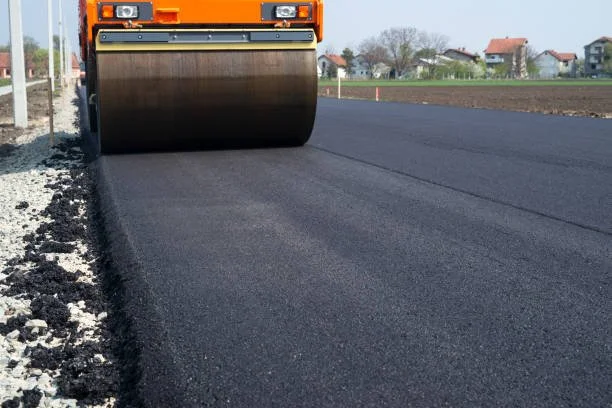Concrete vs Asphalt
Credit: epicpaving
When it comes to road construction, the choice between flexible and rigid pavement systems is far more nuanced than a simple budget decision. It directly impacts long-term performance, maintenance frequency, durability, environmental sustainability, and overall lifecycle cost. Whether you're designing a high-traffic highway, a quiet residential street, or an airport runway subject to extreme loading, selecting the right pavement material depends on the intended function of the roadway and the conditions it will endure.
For this blog post, we will focus on asphalt as the representative material for flexible pavements and concrete as the material for rigid pavements.
This blog post provides a detailed comparison of concrete and asphalt across six critical performance areas. This comprehensive analysis aims to equip civil engineers, asset managers, developers, and infrastructure planners with the insights needed to make informed decisions based on data and industry best practices.
🧱 What Are the Two Main Types of Pavement?
Pavement systems are typically classified into two broad types based on their structural behaviour under traffic loading - Flexible Pavement and Rigid Pavement.
Flexible Pavement
Credit:medibogroup
This type consists of multiple layers of asphalt bound together by bitumen. The structure is designed to flex and distribute traffic loads gradually down to the subgrade. Asphalt pavements are considered flexible. Flexible pavements are advantageous for their ease of construction and ability to accommodate slight settlement and movement.
Rigid Pavement
Credit: atlantisfiber
Rigid pavements use concrete slabs and rely on their high modulus of elasticity to distribute loads over a wider area. The rigidity of the concrete provides high structural capacity and longevity. As noted in the Austroads Guide to Pavement Technology, rigid pavements are particularly suited to high-load environments due to their resistance to deformation.
Understanding whether a flexible or rigid pavement structure is better suited to a project is essential for achieving the intended service life and performance outcomes.
Once the pavement type is understood, it becomes essential to evaluate how each material performs in real-world applications. Below are six key performance areas to consider when selecting between concrete and asphalt.
🛣️ Longevity:
Concrete pavements are renowned for their extended service life, typically performing well for 30 to 40 years or more with minimal structural maintenance. Asphalt pavements, while quicker and cheaper to construct, generally last between 10 to 20 years before requiring major rehabilitation. Longevity should be matched with expected traffic volume and maintenance capabilities.
💰 Cost Considerations:
Asphalt often has a lower initial cost and faster installation timeline, which can be attractive for short-term projects or areas with budget constraints. However, concrete pavements, though more expensive upfront, usually result in lower life-cycle costs due to their durability and reduced maintenance needs. FHWA research shows that in high-volume roads, concrete often proves more economical over a 30-year horizon.
🌱 Environmental Impact:
Concrete tends to support long-term environmental performance by enabling smoother rides (leading to lower fuel use) and reducing heat absorption in urban areas. Innovations like blended cements and supplementary cementitious materials (SCMs) also improve their carbon profile. Asphalt, meanwhile, scores highly for recyclability, with Reclaimed Asphalt Pavement (RAP) now widely used to reduce raw material demand and emissions. Warm Mix Asphalt (WMA) technologies further enhance its sustainability profile.
🔊 Noise:
Asphalt offers a quieter surface thanks to its sound-absorbing, porous texture. Concrete is naturally louder but can be engineered with surface finishes such as diamond grinding, longitudinal tining, or exposed aggregates to reduce noise emissions. The Australian Society for Concrete Pavements provides extensive documentation on surface texturing for acoustic performance.
☀️❄️ Climate Performance:
Concrete outperforms in hot climates, resisting rutting and softening under high temperatures. Asphalt fares better in colder regions, where its flexibility allows it to expand and contract under freeze-thaw cycles. In transitional or variable climates, engineers often base material choice on seasonal severity indices and thermal cracking risk models.
🚛 Load Capacity:
Concrete’s high compressive strength makes it the material of choice for industrial zones, highways, freight corridors, and airport pavements. It maintains shape and structural capacity under sustained axle loads. Asphalt, while adaptable, may require thicker layering or frequent reinforcement in such conditions to prevent rutting and fatigue cracking.
Conclusion
Each material brings distinct strengths that suit different applications. Concrete excels in heavy-duty, high-traffic, and high-heat environments, focusing on durability and long-term performance. Asphalt shines in projects where flexibility, faster construction, and upfront cost are key priorities.
The best outcomes emerge when pavement design is grounded in context, matching material properties to traffic demands, climate exposure, maintenance strategy, and service life expectations. In many cases, hybrid solutions or material combinations may even deliver the best value.
By leveraging current research, established standards, and real-world performance data, project teams can make pavement decisions that support safety, sustainability, and economic efficiency.
📚 References
Understanding Flexible Pavements — Pavement Management Services: https://bit.ly/3H2NWMN
Austroads Guide to Pavement Technology – Part 2: https://bit.ly/3FojOe3
FHWA Research on Pavement Lifecycle Costs: https://bit.ly/438yBTw
National Asphalt Pavement Association – Warm Mix Asphalt: https://bit.ly/45gV6a8
Australian Society For Concrete Pavement - https://bit.ly/435H6P5



